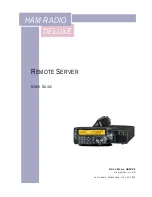
Configuring Ports to Use SLIP and CSLIP
893-826-A
5-3
Assigning SLIP Addresses to Ports
Both the port (the local end of a SLIP connection) and the remote device must
each have an Internet address assigned to them for the purpose of establishing a
connection and forwarding data. The Internet address of the port is referred to
as the local address. The Internet address of the remote device is referred to as
the remote address. During the period when the SLIP link is being established,
both sides of the link communicate their addresses to each other. In some
configurations, one side of the link might not have a pre-assigned Internet
address. When the port has been configured this way, the port will learn its
address from the partner. In this case, the port will assume the address of the
remote device, which is contained in the first packet sent to it by the remote
device.
When the remote device has been configured this way, it can learn its address
from the server if it is capable of making a BootP request. (SLIP links cannot
be established if the remote device does not have an Internet address and is
incapable of requesting one.)
The network topology at your site determines whether you need to assign local
and/or remote SLIP addresses to SLIP ports. The format for the commands that
assign these addresses are the following:
DEFINE PORT port-number INTERNET SLIP ADDRESS port-address REMOTE
remote-address MASk network-mask
In this command, the variable port-address represents a local Internet address
that the port will use. If you do not specify a unique port address, the link will
use the address of the communication server itself. The variable remote-address
is the Internet address that the port will assign to a remote device that does not
know its address. The port will communicate this information while the link is
being initialized. The variable network-mask specifies the Internet addresses on
the local area network to which the remote device may have access. The server
discards packets forwarded to it by the remote device that do not match the
network mask. The server passes packets that do match the network mask to the
local area network.
Most of the time you do not need to assign a local SLIP address to a port
because the SLIP interface uses the Internet address of the server as a local
address. The local SLIP address can be useful in certain network configurations
where you have serial connections at two SLIP ports.
Summary of Contents for 3395A
Page 8: ...viii 893 826 A ...
Page 10: ...x 893 826 A ...
Page 14: ...Preface Preface xiv 893 826 A ...
Page 34: ...Introducing the Communication Server 1 20 893 826 A ...
Page 58: ...Setting Up Basic Modem Applications 3 14 893 826 A ...
Page 84: ...Serial Line Internet Protocol SLIP 5 8 893 826 A ...
Page 98: ...Setting Up ARAP 6 14 893 826 A ...
Page 112: ...Model 3395A Server Support for the Xremote Protocol 7 14 893 826 A ...
















































